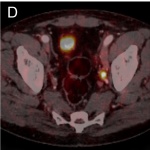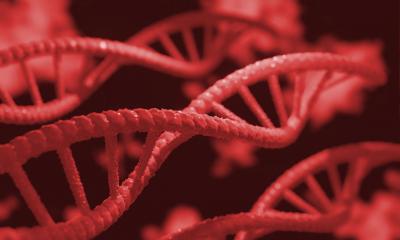© NCT Heidelberg
News • Early detection
Prostate cancer risk: The role of relatives
If a father or brother has prostate cancer, his son or brother has an increased risk of this type of cancer. Whether this also applies when precancerous stages of this cancer are discovered in relatives has not yet been known.
Now scientists have analyzed data from more than six million men to find out how high the risk of prostate cancer is in this case. Researchers at the German Cancer Research Center (DKFZ) and the National Center for Tumor Diseases (NCT) in Heidelberg have been able to show that the risk of prostate cancer is similarly increased in relatives of patients with precursors. This should be taken into account in consultations on early detection.
The researchers published their findings in the journal Cancer.
Recommended article

Article • Recognition in new recommendations
MRI’s role in prostate cancer diagnosis
Lars Schimmöller MD, associate professor of radiology at Düsseldorf University Hospital, tackled current diagnosis of prostate cancer (PCa) and addressed tumour detection, staging, active surveillance and recurrence during the Medica Academy session on Imaging Update. He also highlighted how MRI helps improve biopsies and avoid unnecessary surgery in PCa.
Prostate cancer is now the most common malignancy in men in Germany and accounts for about 20 percent of all new cancer cases in men. Ten percent of all cancer deaths in men are caused by prostate carcinoma - it is the third most frequent cause of cancer death after lung and colon cancer. Worldwide, prostate cancer is the second most common type of cancer in men and the fifth most frequent cause of cancer death. More than 58,000 men are diagnosed with this cancer every year in Germany, and more than 14,000 men annually die of it.
The causes of prostate cancer are still poorly understood. An important risk factor is age: 90 percent of all patients are older than 60 years; it is rarely observed in people under 45 years of age. According to several studies, however, the strongest risk factor seems to be family history. Invasive prostate carcinomas are the strongest risk factor for family members to develop prostate carcinoma themselves. Whether certain precursors of prostate cancer - so-called borderline prostate neoplasia (e.g. atypical small acinar proliferation, ASAP) or prostate carcinomas in situ (e.g. prostate intraepithelial neoplasia, PIN) - also increase this risk in the family history has now been investigated for the first time in a large study carried out by scientists from Heidelberg.
"This is the world's largest cohort study on familial prostate cancer," said Mahdi Fallah, head of the Risk Adapted Prevention Group in the Department of Preventive Oncology at the DKFZ and the NCT Heidelberg. In cooperation with colleagues from the University of Lund, the Heidelberg researchers have analyzed the data of 6.3 million Swedish men born after 1931 and their parents. During the study period from 1958 to 2015, 238,196 men (3.8 percent) developed invasive prostate cancer and 5,756 men (0.09 per cent) developed one of the precursors of prostate cancer investigated.
Since family history is the strongest known risk factor for prostate cancer, these study results also have an impact on prevention - namely on the risk-adapted early detection of prostate cancer
Elham Kharazmi
"Our analyses of this largest database of its kind in the world showed that if first-degree relatives - i.e. father or brother - have a precursor stage of prostate cancer, men are 1.7 times more likely to develop invasive prostate cancer themselves compared to men without prostate cancer or precancerous stages in their family history," Mahdi Fallah reports. This increased risk of prostate cancer is close to that of men who have relatives with invasive prostate cancer: They have about 2-fold higher risk.
In addition, men who have a first-degree prostate cancer precursor in a first-degree relative have 1.7 times the risk of dying of invasive prostate cancer - also compared to men who have no relatives with prostate cancer precursors or prostate cancer. The risk of prostate cancer is 2-fold in men whose relatives have been diagnosed with precancerous lesions under the age of 60, which is slightly higher than that in men whose relatives have been diagnosed with precancerous lesions at an older age (1.7 times).
"If there are precursors of prostate cancer in the family history, these tumor forms are therefore just as relevant as invasive forms of prostate cancer in relatives - in terms of both the incidence of prostate cancer and mortality," explains Mahdi Fallah.
"Since family history is the strongest known risk factor for prostate cancer, these study results also have an impact on prevention - namely on the risk-adapted early detection of prostate cancer," adds Elham Kharazmi, co-leader of the study and scientist at the DKFZ and the NCT Heidelberg. Not only prostate cancer, but also precursors of it in the family history should be included in the consultation of family members for early detection and risk assessment.
Source: National Center for Tumor Diseases Heidelberg (NCT)
21.08.2020










